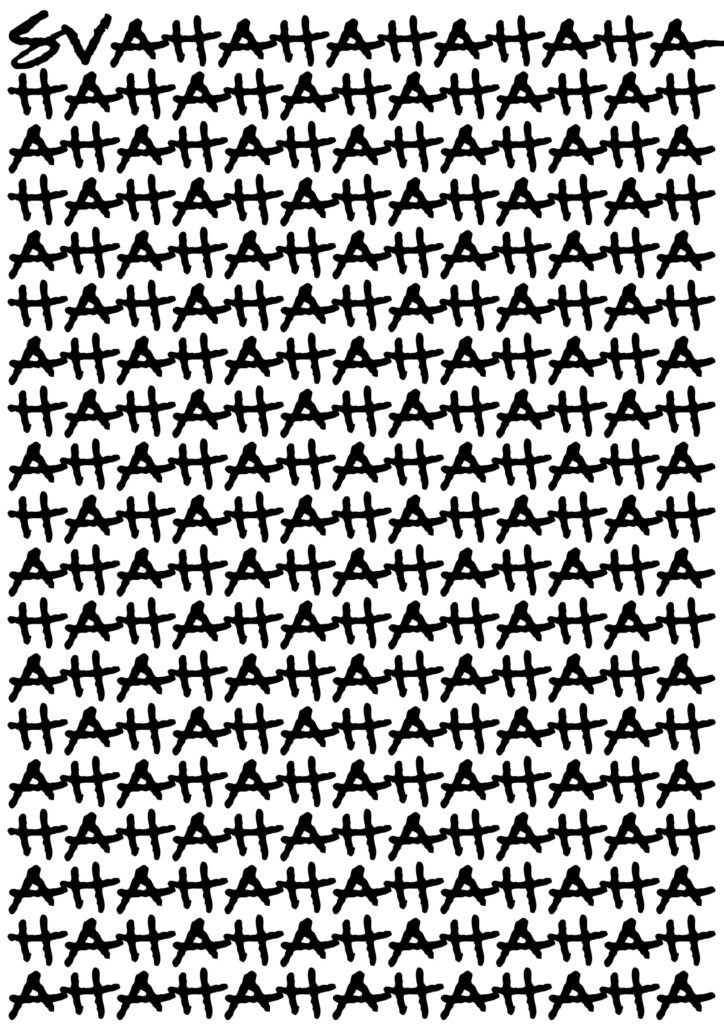
When Driving into Melbourne, graffiti starts to pop up on the freeway barriers and road signs, building in intensity the closer you get to certain suburbs.
This reminded me of an idea of a tag I had when talking to my son about street art. Taking ” Svaha” an auspicious ending used when chanting certain Vedic mantras, and extending it with some humorous “haha”.
This can expand and contract as long as needed to make the visual statement, and counteracts the edge of angst expressed in tagging with some joy of acceptance of the cosmic comedy we find ourselves within.
In the Vedic Conception Svaha is considered a Goddess, the consort of Agnidev, the God of Fire and Sacrifice, and represents the shakti, or spiritual power that cannot be consumed by Agnidev. When performing a Yagya – Fire Sacrifice – “Svaha” is chanted at the end of each offering and at the end of the mantras invoking the various deities to the seat of sacrifice, as fresh ghee is poured onto the scared fire.
Srila Bhakti Rasak Sridhar Maharaj gives the following insight.
All the Vedic mantras say we must sacrifice ourselves in the plane of dedication. In the Vedic mantra, svāhā means, “First dedicate yourself. See to your own self first.” Kṛṣṇa says in Bhagavad-gītā (6.5), “Ātmaiva hy ātmano bandhur ātmaiva ripur ātmanaḥ: the mind is the conditioned soul’s best friend or his worst enemy.” We must see to our own self first—charity begins at home.
Since we live in this illusory environment, we cannot see Kṛṣṇa, His devotees, His glories, His Dhām, His Pastimes, or His Name and fame. We cannot see anything of Kṛṣṇa in this environment because our eyes are covered by illusion. First, it is necessary to clean our mirror, and then we can see our figure in the mirror.
~ Swami B.R Sridhar
